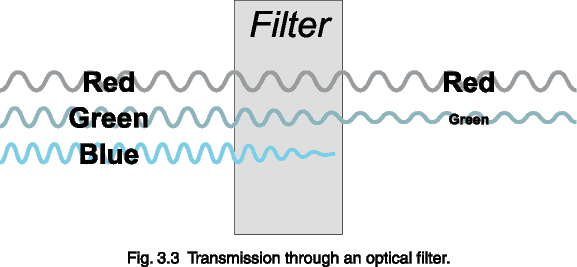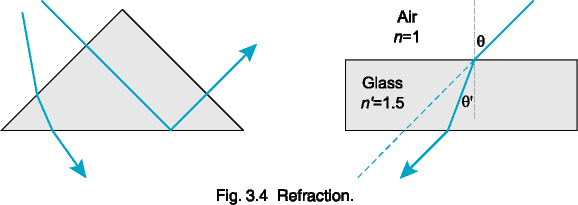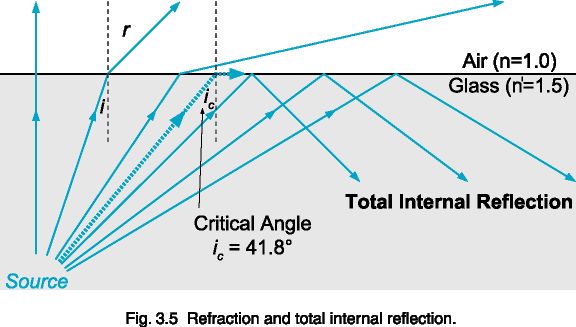 How
Light Behaves
How
Light Behaves How
Light Behaves
How
Light BehavesPrecision optical systems use first surface mirrors that are aluminized on the outer surface to avoid refraction, absorption, and scatter from light passing through the transparent substrate found in second surface mirrors.

Diffuse reflection is typical of particulate substances like powders. If you shine a light on baking flour, for example, you will not see a directionally shiny component. The powder will appear uniformly bright from every direction.
Many reflections are a combination of both diffuse and specular components. One manifestation of this is a spread reflection, which has a dominant directional component that is partially diffused by surface irregularities.


Internal transmittance, ti, is defined as the transmission through a filter glass after the initial reflection losses are accounted for by dividing external transmission, T, by the reflection factor Pd.
So, for a 2.2 mm thick filter, the external transmittance at 330 nm
would be 36.1%

For a typical air-glass boundary, (air n = 1, glass ní = 1.5), a light ray entering the glass at 30° from normal travels though the glass at 10.5° and straightens out to 30° when it exits out the parallel side.
Note that since sin(0°) = 0, light entering or exiting normal to a boundary does not bend. Also, at the internal glass-air boundary, total internal reflection will occur when nísin(qí) = 1. This occurs at qí = 41.8° for ní = 1.5 glass.
The index of refraction itself is also dependent on wavelength. This angular dispersion causes blue light to refract more than red, causing rainbows and allowing prisms to separate the spectrum.


where q is the diffraction angle, l
the wavelength of radiant energy, and D the aperture diameter.
This effect is negligible in most optical systems, but is exploited in
monochromators. A diffraction grating uses the interference of waves
caused by diffraction to separate light angularly by wavelength.
Narrow slits then select the portion of the spectrum to be measured.
The narrower the slit, the narrower the bandwidth that can be measured.
However, diffraction in the slit itself limits the resolution that can
ultimately be achieved.

The center wavelength shifts with angle, since the optical path increases as the cosine of the angle. Special input optics are required to provide a cosine response while transmitting light through the filter at a near normal angle.
